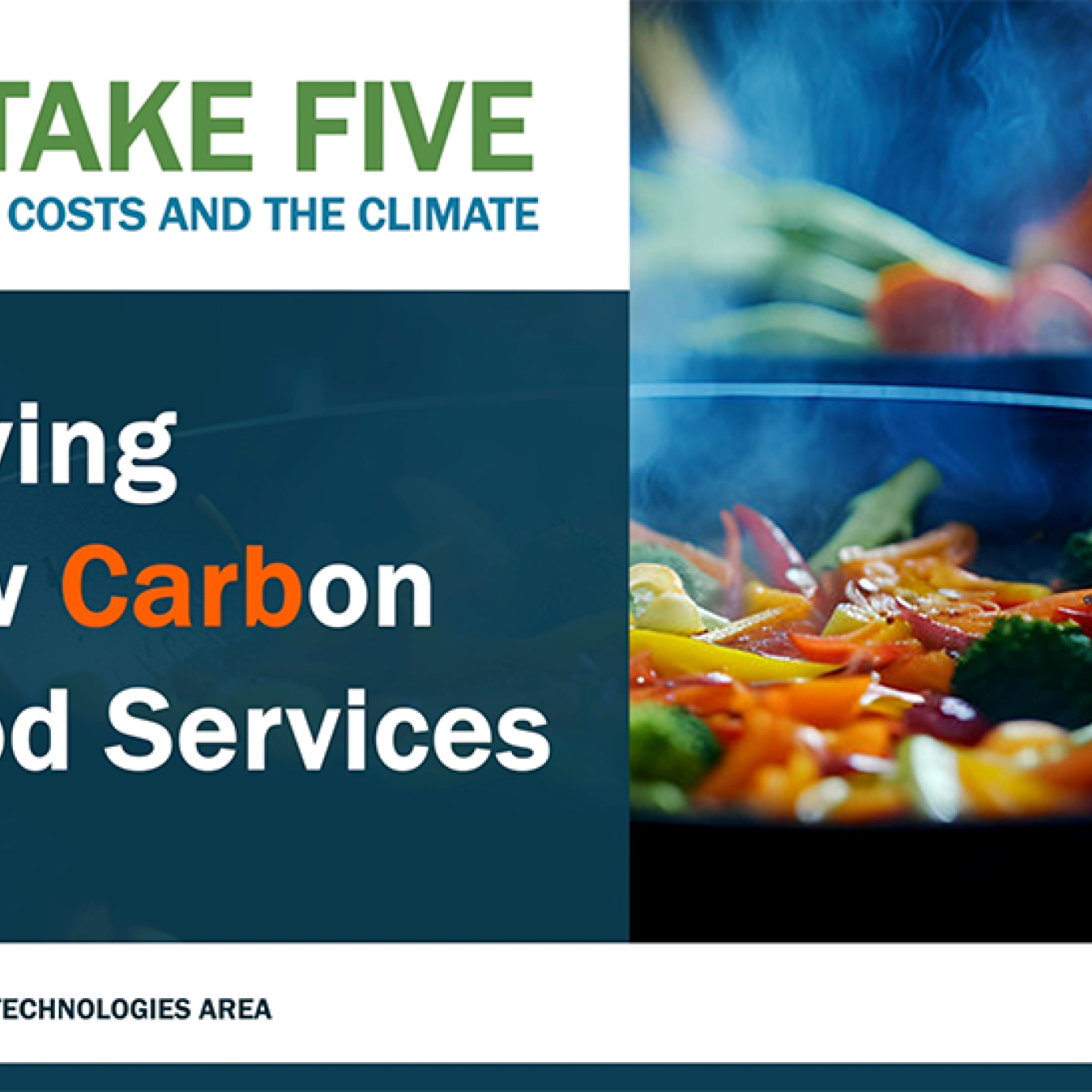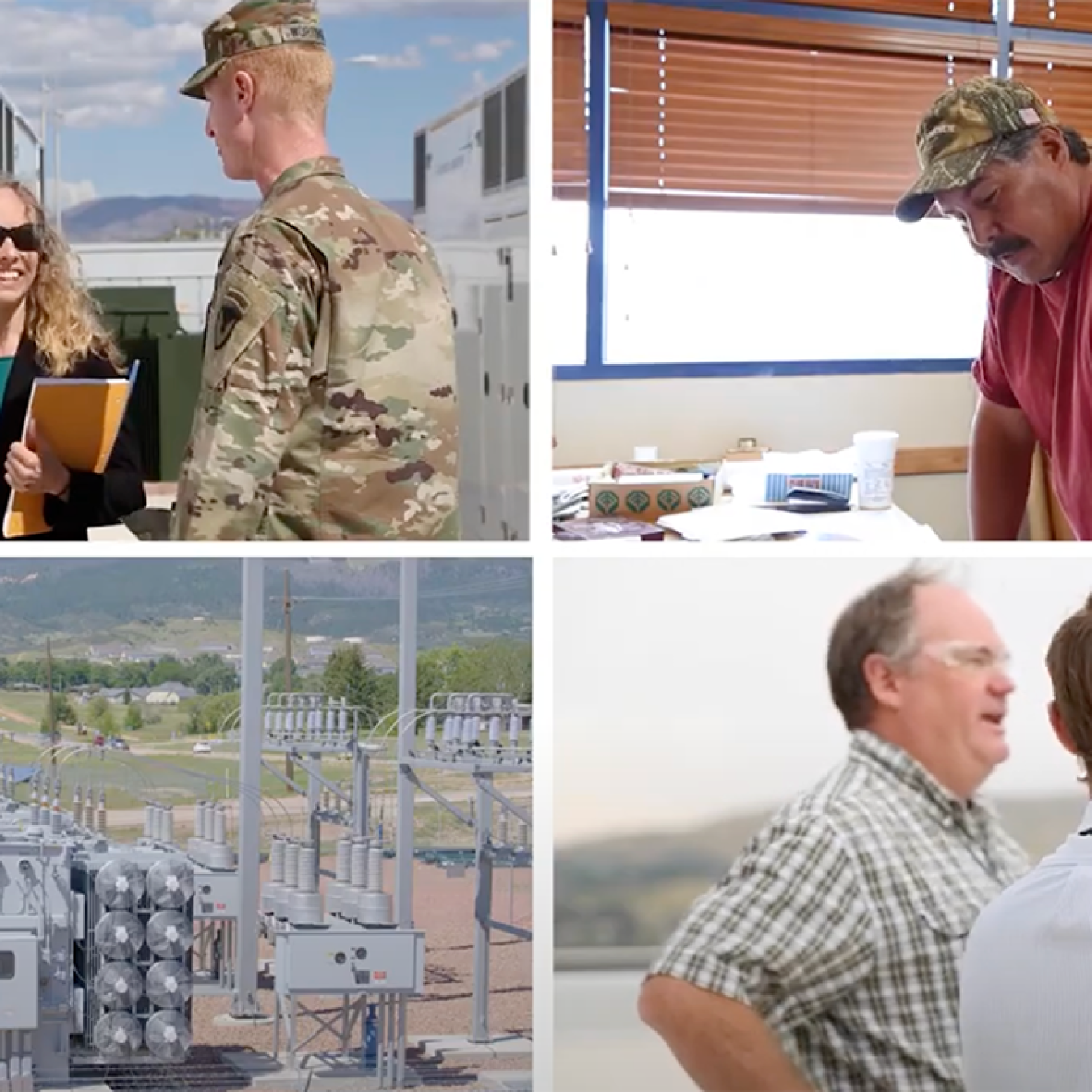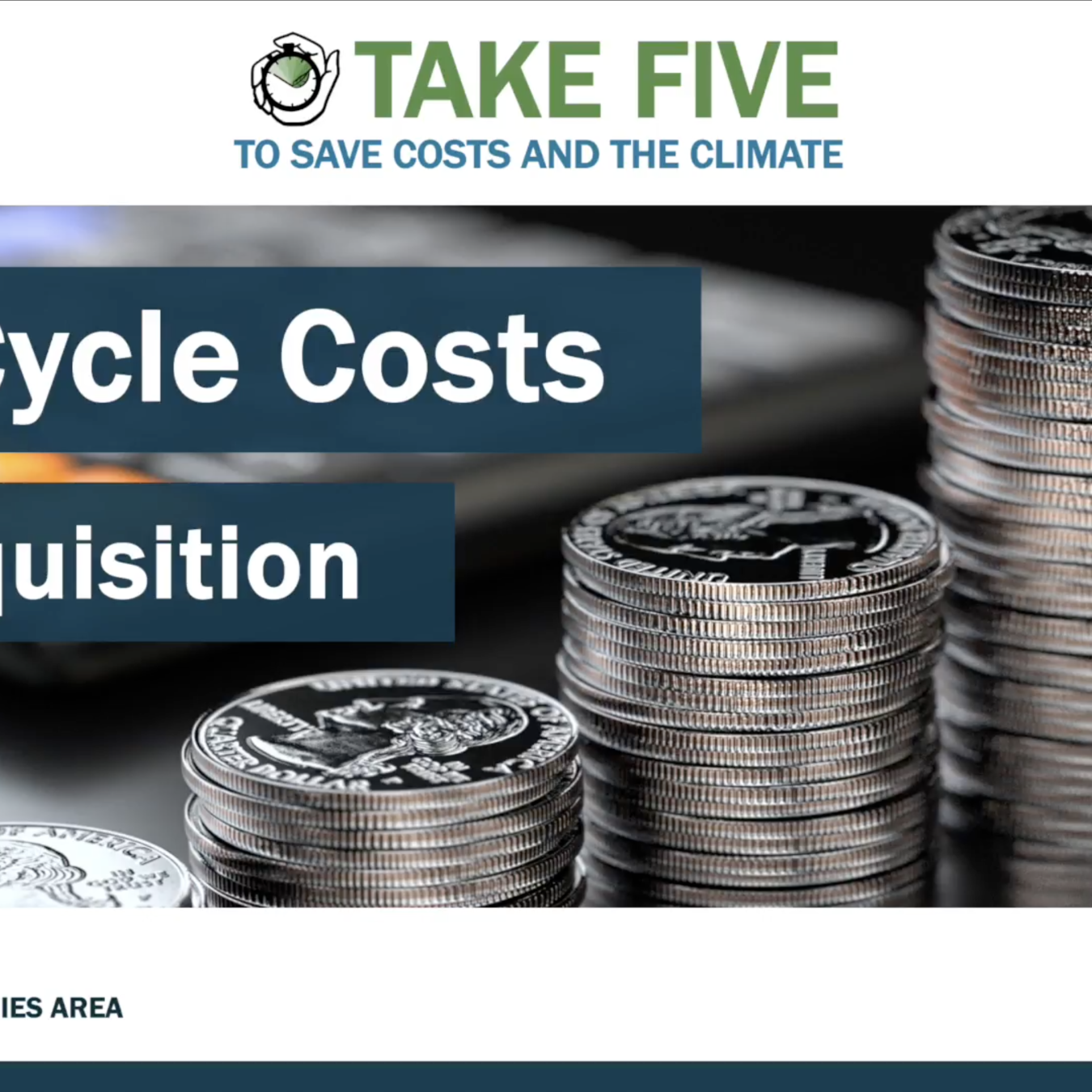In this video, you’ll learn how driving an EV is different than a gasoline vehicle, and how to make the most of your ride.
Federal Energy Management Program
July 26, 2022Electric vehicles (EVs) are an important part of our transition to a clean energy future… and they are fun to drive! In this video partnership between the Federal Energy Management Program (FEMP), the National Renewable Energy Laboratory (NREL), and the Department of Defense (DOD), you’ll learn how driving an EV is different than a gasoline vehicle, and how to make the most of your ride.
Joe Bryan, Chief Sustainability Officer, U.S. Department of Defense: "Why are EVs an important part of our transition to a clean energy future? The answer, for me, is: This is where the world is going and we can't be left behind—as an agency, as a department, and as a country."
Susanna Blume, Director, Cost Assessment and Program Evaluation, U.S. Department of Defense: "I think it's abundantly clear at this stage that that's the direction that we need to head in for the sake of the planet. But what I will also say is that as an EV driver, I also think it's just a better technology. The ride is quieter, it's smoother; it's just a nicer experience all the way around."
Alex Bowie, Protection Force Group Manager, National Renewable Energy Laboratory: "In regards to the performance of the vehicle, its turning radius is great, especially here on a close-knit campus. Its get-up-and-go when we have to go on the highway to get up to speed is great. There's really not as much of a transition as you would typically experience in a gas vehicle. It's a lot smoother of a transition as you go through the gears, which feels safer in a way."
Ms. Blume: "Yeah, I really like driving my electric vehicle. I like it a lot more than any gas-powered car I've driven. It's really quick. It's really quiet. The ride is very smooth. It handles better because the weight is more evenly distributed. It's just hands-down superior."
Mr. Bryan: "For me, they're just a better technology. I drive an EV. My kids are all learning to drive on an EV. And in fact, we have an EV and we also have an internal-combustion engine, which is a minivan, and my kids strongly prefer the EV because I think they feel more in control. It's more responsive. It's got features for a new driver that actually they really prefer; aside from the fact that I'm sure they would prefer to drive the EV than driving a minivan in the first place but that's probably common across kids."
Cabell Hodge, Federal Fleet Project Leader, National Renewable Energy Laboratory: "So when I'm looking for a public charging station, there are a bunch of different apps that you can get on your phone. The one that I like to use is actually the DOE app. It's the Alternative Fuels Data Center. A big part of the Biden initiative is to make sure there is an electric charging station, and a solid one—so 150 kilowatts, four different chargers—within one mile of the highway anywhere that's more than 50 miles from another fast charger."
Ms. Blume: "For the daily driving that I do, I only have to charge like once or twice a month usually in the warmer weather and so it's just not that much of a burden. I think a lot of people think it's going to be really hard to keep an EV charged and it's going to be complicated and kind of scary but it's not. It's just very easy and they're so cheap to own because there aren't moving parts or an internal compression engine or even a transmission; you know, all those big expensive things that can go wrong in a conventional car are not in an EV."
Julian Bentley, Managing Director, Bentley Energy Consulting: "Almost all the automakers have announced major investments in domestic EV and battery production. So, what does that mean for the domestic electric vehicle market? By 2025, many new battery plants currently under construction will come online, bringing total capacity to 656-gigawatt hours and enough to support 6.3 million more EVs than today. It is crucial to prepare for this tidal wave of EVs by becoming comfortable with EVs in the fleet, and deploying EVSC to support all of these future EVs."
Mr. Bryan: "I'm sort of notorious amongst some of my colleagues of saying, 'Hey, just take the keys and go drive the car, just go out for a spin.' And I think that's one of the things that I would tell someone who hasn't driven an EV and is skeptical or is considering ... should just go to a local dealer and drive the car. And I don't think it matters which car you drive because the experience in the EVs that I've driven—I've driven a bunch—is pretty similar in terms of some of the attributes that I just really like: Like the responsiveness of the vehicle, playing around with regenerative braking for a new driving experience … and they're just fun to drive."
Learn more about electrifying your fleet: https://www.energy.gov/eere/femp/electric-vehicles-federal-fleets.
Learn more about FEMP Electric Vehicle Training.
More Videos
-

- Energy Efficiency
- Buildings and Industry
- Buildings and Industry
- Buildings and Industry
August 9, 2024 -

- Building Energy Modeling
- Renewable Energy
- Renewable Energy
- Renewable Energy
- Renewable Energy
June 14, 2024


